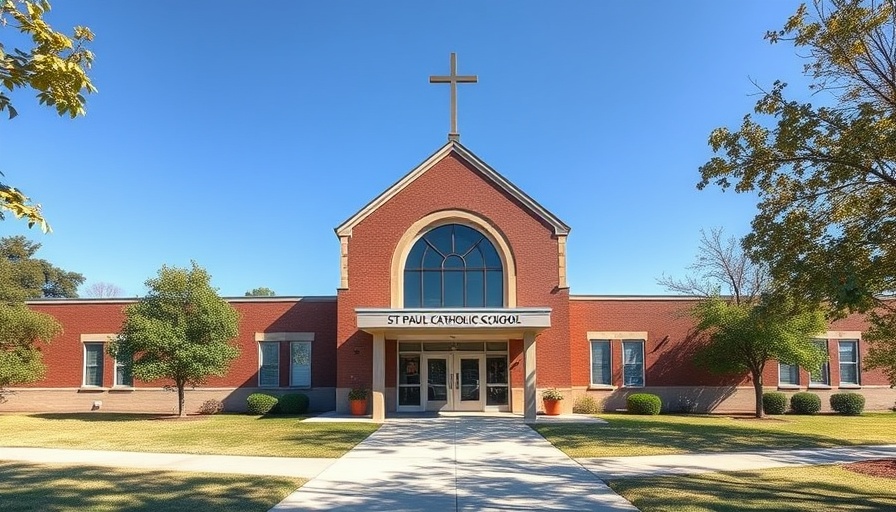
A Declining Trend: The Struggles of Catholic Schools
The plight of St. Paul Catholic School reflects a broader challenge facing Catholic educational institutions across the United States. For over a decade, enrollment in Catholic schools has been on a downward trajectory, significantly affecting their financial sustainability. This year, St. Paul is grappling with the decision to close its doors, a move that many fear may be just a harbinger of more closures to come.
The Numbers Speak: Enrollment Crisis
Seventy years ago, educational institutions like St. Paul thrived, connecting families and their communities through faith-based learning. However, recent statistics tell a stark story. St. Paul has seen a steep decline from over 500 students to a mere 100. The National Catholic Educational Association (NCEA) underscores that this declining trend is not limited to a localized problem; nationally, Catholic school enrollment dropped by 14.2% since the 2013-2014 school year.
Understanding the Financial Strain
The challenges at St. Paul extend beyond mere enrollment figures. The school has relied heavily on parish support, with $250,000 required yearly just to maintain basic operations. Furthermore, deferred maintenance costs exceeding $1 million compound the financial difficulties, creating an urgent need for action and intervention. The void left by dwindling enrollment means that crucial resources are being stretched to their limits.
School Vouchers: A Possible Lifeline?
With the Texas legislature currently debating school vouchers, there arises a spark of hope that could potentially benefit schools like St. Paul in the future. Parents have expressed optimism about the prospect of school vouchers, believing they could lessen financial burdens for families seeking quality education. As Nicole Callozo, a parent of a St. Paul student, notes, the potential impact of these vouchers could make a tangible difference amidst rising inflation and financial strains on local families.
The Community's Response
The response from the community surrounding St. Paul has been emotionally charged. Parents like Melanie Romero express disappointment over the prospect of losing a community anchor where many families have invested years. In today's environment, where schools face severe competition for students and funding, it highlights the intertwined nature of educational quality, community support, and financial viability.
A Glimpse Into the Future: What Lies Ahead?
While the current climate presents challenges, it also emphasizes the need for innovative solutions in the education sector. Many educational leaders advocate for re-imagining what Catholic education means in today’s context—addressing financial sustainability while remaining committed to core values and community service. The potential stabilization of enrollment hinted at by NCEA suggests that systems could adapt, learn, and potentially thrive if proactive measures are taken.
Conclusions and Moving Forward
As St. Paul prepares for its closing, it serves as a critical case study for other schools across the country grappling with similar issues. The convergence of declining enrollment, financial pressures, and increasing community demands creates an environment demanding immediate attention and action. Local families are encouraged to engage with their representatives about the pressing need for solutions to support educational institutions. Students' futures depend on how stakeholders prioritize education in the upcoming decade.
For those affected by this development, the time is now to advocate for policies and support structures that could ensure educational stability for the next generation. Redirecting focus toward sustainable practices within Catholic education could pave the way for more resilient institutions in a shifting landscape.
 Add Element
Add Element  Add Row
Add Row 



 Add Row
Add Row  Add
Add 


Write A Comment